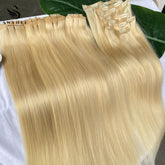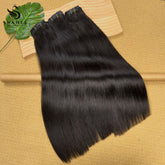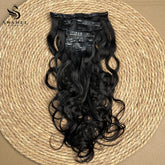How to Make Your Hair Less Greasy?
Are you constantly battling oily hair? Do you often feel frustrated because of it? Don't give up—here's how to transform your hair from "greasy" to "normal."
1. Reduce Shampoo Frequency
It may seem counterintuitive, but washing your hair too often actually makes it greasier. Shampoo removes oil, but it also triggers the scalp to produce more sebum to compensate. Excessive shampooing disrupts the scalp's natural balance, leading to overactive oil glands. To minimize oil production, gradually reduce washing frequency.Recommendation: Aim for once every two to three days. Some experts even suggest limiting shampooing to twice a week.
2. Use Clarifying Shampoo
When washing less frequently, thorough cleansing becomes crucial. Clarifying shampoos effectively remove product buildup, environmental debris, and excess oils that cling to the hair shafts. However, due to their strong formula, use them at most twice a week to avoid dryness.Tip: Opt for translucent shampoos instead of creamy ones. Cream-based products often contain heavy emollients that can weigh down oily hair and contribute to greasiness.
3. Adjust Water Temperature Wisely
Water temperature plays a key role in scalp health and oil control. Extremely hot water strips the scalp of natural oils, prompting it to overproduce sebum. For optimal results:
-
Start with warm water to open the hair cuticle and dissolve dirt.
-
Finish with a cold water rinse to close the cuticle, locking in moisture and reducing oiliness.
4. Incorporate Homemade Treatments
Regular hair care treatments can help manage excess oil, and many effective solutions are found at home:
-
Apple Cider Vinegar: Known for balancing scalp pH, dilute it in a 1:8 water solution and apply post-shampoo. It improves hair texture and is budget-friendly.
-
Baking Soda: Mix 2 tablespoons with ¼ cup warm water, massage into wet hair, and let sit for 5–10 minutes before rinsing. Limit use to 1–2 times weekly to avoid dryness.
-
Talc-Free Baby Powder: Absorbs excess oil at the roots, refreshing hair between washes.
-
Sea Salt: Acts as a natural absorbent, soaking up sebum and adding texture for easier styling between shampoos.
5. Maintain a Balanced Diet
Diet significantly impacts scalp health. Consuming excessive oily or processed foods can exacerbate oil production. Focus on:
-
Fruits, vegetables, and hydration to regulate the body's internal balance.
-
Foods rich in B vitamins (especially B2 and B6), such as kale, spinach, and seaweed, which help reduce sebum secretion.
6. Style Strategically for Grease Control
If you need quick fixes to hide oiliness:
-
Blow-Dry with Caution: Use low heat to dry excess sebum without damaging hair.
-
Add Volume: Flat hair tends to cling to the scalp, highlighting greasiness. Curly or voluminous styles (e.g., buns, fishtail braids) mask oil and add texture.
-
Master Quick Hairstyles: Updos or braided styles are perfect for oily hair days, helping you transition smoothly while adjusting your care routine.
By combining these techniques—from adjusting washing habits to embracing dietary and styling changes—you can effectively manage oily hair and achieve a healthier, more balanced scalp. Consistency is key—be patient as your hair adjusts to the new routine!








